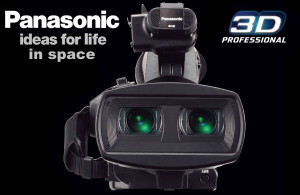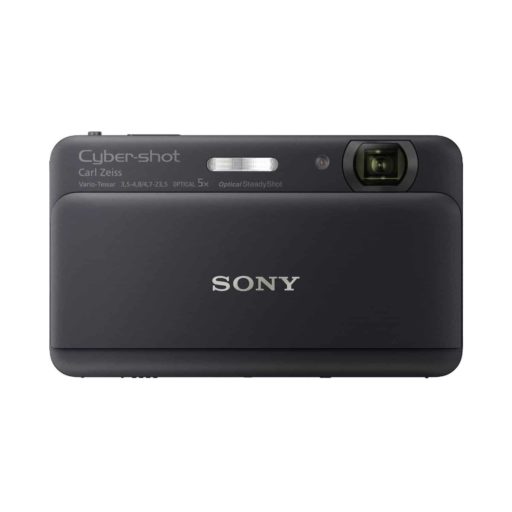The Kx, interchangeable lens digital SLR to home Pentax, was voted by TIPA (Technical Image Press Association) “thebest digital SLR for the year 2010, thanks to the combination of price, technical equipment of all respect and trendy look. The Japanese company is the only one to believe in marriage services / colors including the SLR segment……
The Pentax K-x follows the K-7 as the company’s second new dSLR offering in 2009. Like the K-7, it offers improvements in many areas over its predecessor. Where the K-7 replaced the K20D in the Pentax lineup, the K-x replaces the K2000, with which it shares nearly its entire external appearance. Where it differs from the K2000 is in the incorporation of a new 12.4-megapixel CMOS sensor manufactured by Sony, similar to the one used in the Sony A500 and the Nikon D90 and D5000. This new sensor promises 720p HD video recording, improved live view, and vastly improved high-ISO performance—vital for low-light photography. Also unlike the K2000, the K-x is being offered with three different lens kits: the traditional DA-L 18-55mm kit lens, the 18-55mm plus the DA-L 50-200mm telephoto zoom, and the 18-55mm plus a new DA-L version of the much-loved 55-300 zoom (at $649, $749, and $849 MSRP respectively). With an attractive price point, good word of mouth, and strong performance, the K-x represents Pentax’s best stab yet at the ever-growing entry-level dSLR market.
The Pentax KX, like the K200D before it, relies on AA cells for juice over the proprietary Lithium-Ion batteries typically found in DSLRs and most compacts. Pentax seems to regard the convenience of disposable batteries a selling point in this class and points out (video below) that owners won’t need to mess around with wall chargers. If you opt for high-performance, readily-available, Lithium-Ion AAs, Pentax reckons you’ll get an impressive 1900 shots.
This lightweight DSLR comes in at just 18.2oz and runs on Pentax’s PRIME II image processing engine, which is capable of achieving up to 1/6000 second shutter speeds and 4.7fps continuous shooting. ISO sensitivity runs from ISO 100 to 3200 and a built-in sensor-shift shake reduction system moves the sensor itself, to ensure blur-free handheld images.
The camera is quite small and light, rivaled only by some small Olympus models. Since it requires four AA batteries, it’s heavier than it could be, though some users might that the extra weight is a nice counterbalance to the lens. The grip features a nicely textured and rubberized material. It’s thin, but feels nice in-hand thanks in large part to an ergonomic finger notch just below the shutter release. The compact design means that those with large hands will need to curl their pinky finger under the camera, but this is typical of many dSLRs. Unfortunately (though perhaps as expected) there is no vertical battery grip for the K-x. Build quality is very nice for an entry-level camera, with robust plastics and solid-feeling buttons and dials. The camera has a dense feel, very little flex, and no creaking noises in use, as you might find on other low-end dSLRs.
Button placement is typical for a Pentax. The user’s thumb falls naturally across the controls on the right-rear of the camera, which include the combined AF/AE-Lock, playback, live view, info, and menu buttons. Also on the rear of the camera are an array of four buttons that serve as both a four-way control pad and as direct access to the self-timer, ISO, flash, and white balance settings. At the center of these four buttons is the OK button. The sole control dial is found at the upper edge of the rear, just to the right of the viewfinder. This dial is used to control shutter speed, aperture, ISO, and so on. To the left of the viewfinder is the combined flash release and trash button. The 2.7″ rear LCD is unchanged from that of the K2000, offering 230,000-pixel resolution. While this doesn’t come anywhere near the K-7’s 3″, 920,000-pixel IPS panel, it’s generally in line with the competition’s entry-level models. It’s plenty bright, its color accuracy is good, and it’s quite responsive.
The pentamirror viewfinder offers 96% coverage and .85x magnification—identical to the K2000 but a definite step down from the K-7’s 100% coverage and .95x magnification. Like the K2000, the K-x lacks the customary red AF-confirm indicators for each of its 11 focusing points. This means that in full autofocus mode, the user may not know which focus point is selected. If this is a concern, the user can set the AF system to use only the center point, or use the directional pad to manually select other focus points. With practice this can be done without looking away from the viewfinder, but those accustomed to full-auto shooting with focus-confirmation indicators might find this annoying.
One intriguing and attention-grabbing aspect of the K-x is that it comes in four colors: standard black as well as the affectionately nicknamed “stormtrooper” white, bright red, and navy blue. Back home in Japan, Pentax even offers 100 distinct grip and body color combinations covering a gamut of eye-popping hues. In combination with the camera’s small size and light weight, Pentax is obviously hoping that the K-x will appeal to the women and young people who make up the largest market for entry-level dSLRs.
In general, the K-x’s performance is quite impressive—its level of responsiveness is easily as good as any other entry-level dSLR on the market. Shutter lag, as expected, is non-existent. The 11-point AF system has more impressive specs than the Canon’s similar entry-level Rebel T1i. It’s very quick overall, lagging only slightly behind the semi-pro K-7 in terms of performance, and is surprisingly good in low light. With quickshift-enabled Pentax lenses, users can switch freely from automatic to manual focus when composing their shots; with third-party or the DA-L series kit lenses they will need to toggle between auto and manual focus modes via the switch to the left of the lens mount. Continuous shooting is a speedy 4.7 frames per second—better than any other camera in its price range—and the max shutter speed of 1/6000 greatly expands the creative possibilities for wide-aperture shooting in bright daylight.
The K-x provides Automatic, Manual, Aperture Priority, Shutter Priority, ISO Priority, and Program shooting modes, in addition to 15 different scene modes. In most shooting modes the user can choose between an auto-ISO mode with user-specified upper and lower limits, or a specific ISO setting. The ISO setting ranges from 200 to 6400 by default, and can be expanded to 100 to 12800 with a toggle in the custom menu. White balance settings are fairly comprehensive, encompassing automatic, daylight, shade, cloudy, four fluorescent, tungsten, flash, CTE, and manual options. As with the K-7, the K-x offers both “subtle” and “strong” auto-white balance correction when shooting under tungsten light, accessible via the custom menu. These settings help correct too-warm white balance when shooting indoors without flash.
As with all other Pentax dSLRs since the K100D, the K-x is equipped with in-body image stabilization (Shake Reduction). While this has certain advantages over the in-lens solutions favored by Canon and Nikon—namely that stabilization works on all lenses mountable on the camera, even 40 or 50-year-old screwmount lenses—it has disadvantages as well. It’s slightly less effective than in-lens stabilization, and the user doesn’t see a stabilized viewfinder image as they would with and in-lens solutions. Sensor-based stabilization is a time-tested method however, and one that works quite well within its limitations, granting the user 2 to 4 usable stops over unstabilized shooting.
Battery life was initially a concern for some K-x users; under the original v1.0 firmware the battery meter would sometimes produce contradictory or nonsensical readings when using NiMH AA batteries. A v1.01 firmware release has since fixed this issue, and it is now clear that the K-x’s battery life is excellent, no matter which battery type is used. With the supplied Lithium AAs, my test unit lasted for more than 1,200 stills and several lengthy 720p videos (Pentax rates lithiums at 1,900 shots without flash use). NiMH AAs and pre-charged hybrid AAs like the popular Sanyo Eneloops may have slightly shorter charge expectancy, but they are far more cost-effective in the long run.
The K-x produces stunning images at base ISO and gets truly impressive results all the way up to ISO 3200. As would be expected from a sensor related to those found in the Nikon D90 and Sony A500, high-ISO performance is remarkable for an APS-C sensor. In some cases it even approaches (but can’t quite match) the quality produced by full-frame dSLRs like the Nikon D700 and the Canon 5DMkII. While image noise is present in these high-ISO shots, it is well-controlled and has a distinct lack of chroma noise (the sort that typically leads to mottled, splotchy color patches). This means that the noise has a film-like quality that adds character rather than distraction to the images. It’s a genuine joy to use a camera that can shoot clean images at ISO 1600 and produce extremely usable shots at 3200 and sometimes 6400. (ISO 12800 isn’t recommended except when you absolutely must have a shot for documentary purposes.) Auto white balance is generally spot on, in all conditions; the lighting-specific white balance modes also work as advertised.
Pentax has included a number of fun user options, some unique to Pentax dSLRs and some of the sort usually seen only on point-and-shoot cameras. Headlining the unique features is a HDR shooting mode that debuted on the K-7. This mode takes a succession of three photos and then merges them in the camera to greatly expand the dynamic range of the final product. To get a clear image, the use of a tripod is recommended when shooting in this mode. Other nifty features include a simulated “cross-processing” mode that seeks to mimic the effect of developing film negatives in the wrong developer chemicals, which results in exaggerated color tints and contrast. In the field, this mode can yield interesting results, but many will prefer to do this sort of manipulation themselves in post-processing. Also available are “digital filters” including Toy Camera (produces a Holga-like effect), Retro, High Contrast, Extract Color (desaturates the image with the exception of a user-selected color), Soft, Star Burst, Fish-eye, and a Custom filter that can combine any of the above. Also included are distortion and chromatic aberration correction for Pentax DA-series lenses, as first seen in the K-7. These modes post-process shots to remove barrel or pincushion geometric distortion as well as lateral purple fringing for images taken using Pentax DA-, DA-L-, or D-FA-series lenses. These corrections are applied in-camera when shooting in JPEG mode, or stored in the metadata for RAW shots, to be utilized in the included Pentax Digital Camera Utility 4.0 software.
In short, the K-x offers a lot of what made the K-7 one of the most exciting cameras of the year, at less than half the semi-pro camera’s price. In one important way—the new 12.4-megapixel sensor from Sony, a variant of the reigning high-ISO APS-C champ—it even outclasses its big brother. It has the features, handling, and build quality to best most of its rivals, especially given its bargain price. The Nikon D5000 is equipped with a similar sensor and has a tilt-and-swivel LCD, but has an inferior viewfinder, a smaller ISO range, and costs more. The Canon XSi is outclassed in nearly all respects; the T1i puts up a stronger fight. It offers 1080p video recording (albeit at the less-desirable 20 or 30fps framerates), a larger and higher-resolution LCD screen, and a higher-resolution sensor, but inferior continuous shooting rate and a less-advanced autofocus system, not too mention a heftier price tag. With its small size, light weight, attractive color options, advanced functionality, great image quality, and low price, the K-x is a very attractive proposition not only for new dSLR users, but also for those looking for a complement to their existing enthusiast or semi-pro cameras.
Specifications:
- 12.4-megapixel CMOS sensor.
- 720p HD video.
- Shake Reduction.
- Pentax K/KA/KAF/KAF2/KAF3 mount lenses.
- HDR image capture.
- Includes 18-55mm f/3.5-5.6 AL lens.
- 2.7-inch live view LCD screen.
- AA lithium batteries (NiMH and alkaline compatible).
- Captures images and video to SD/SDHC memory (not included).
Resource:digitalcamera-hq.com










